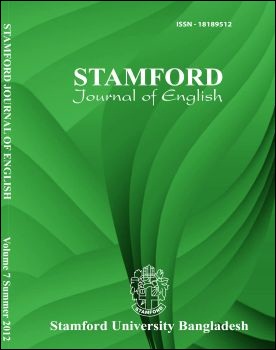The Semantics of Progressive Aspect: A Thorough Study
DOI:
https://doi.org/10.3329/sje.v7i0.14464Keywords:
Semantics, Progressive, Thorough StudyAbstract
In English grammar, verbs have two important characteristics--tense and aspect. Grammatically tense is marked in two ways: Present and Past. English verbs can have another property called aspect, applicable in both present and past forms of verbs. There are two major types of morphologically marked aspects in English verbs: progressive and perfective. While present and past tenses are morphologically marked by the forms verb+s/es (as in He plays) and verb+d/ed (as in He played) respectively, the morphological representations of progressive and perfective aspects in the tenses are verb+ing (He is/was playing) and verb+d/ed/n/en (He has/had played) respectively. This paper focuses only on one type of aspectual feature of verbs--present progressive. It analyses the use of present progressive in terms of semantics and explains its use in different contexts for durative conclusive and non-conclusive use, for its use in relation to time of reference, and for its use in some special cases. Then it considers the restrictions on the use of progressive aspect in both present and past tenses based on the nature of verbs and duration of time.
DOI: http://dx.doi.org/10.3329/sje.v7i0.14464
Stamford Journal of English; Volume 7; Page 87-97
Downloads
552
1456

